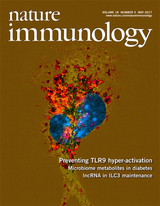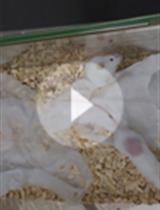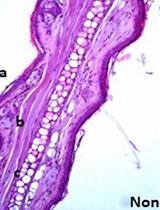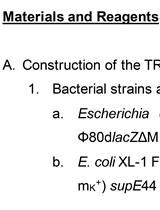- EN - English
- CN - 中文
Transplantation of Fecal Microbiota Shaped by Diet
饮食经控制的粪便微生物群的移植
发布: 2018年01月05日第8卷第1期 DOI: 10.21769/BioProtoc.2683 浏览次数: 9506
评审: Neelanjan BoseLucíola da Silva BarcelosAnonymous reviewer(s)
Abstract
Alterations in diet and gut microbial ecology underlie the pathogenesis of type 1 diabetes (T1D). In the non-obese diabetic (NOD) mouse, we found high concentrations of bacterial metabolites acetate and butyrate in blood and faeces correlated with protection from disease. We reconstituted germ free (GF) NOD mice with fecal bacteria from protected NOD mice fed with high acetate- and butyrate-yielding diets, to test whether the transferred gut microbiota protect against the development of T1D. GF NOD mice that received a microbiota shaped by high acetate- but not butyrate-yielding diet showed a marked protection against diabetes. This fecal transplantation assay demonstrated the potential for a dietary technology to reshape the gut microbiota that enables specific bacteria to transfer protection against T1D.
Keywords: Gut microbiota (肠道微生物群)Background
Changes in the gut microbiota have been observed in a wide variety of illnesses and conditions. A dysbiotic gut microbiota loses homeostatic balance due to changes in the ratios between commensal and pathogenic bacteria. Dysbiosis can be observed when there are large changes in the makeup of the microbiota, with certain species increasing or decreasing in number (Clemente et al., 2012; Rajilic-Stojanovic, 2013). Moreover changes in gut microbiota composition (which may affect metabolites such as SCFAs) associate with many inflammatory diseases (Clemente et al., 2012), including T1D (de Goffau et al., 2013; Endesfelder et al., 2014). For example, patients with, or people who are predisposed to, autoimmune type 1 diabetes typically show a decrease in Firmicutes abundance and an increase in their Bacteroidetes abundance (Giongo et al., 2011). In contrast, various types of inflammatory bowel diseases (IBD), such as ulcerative colitis or Crohn’s disease show the opposite (Frank et al., 2007; Spor et al., 2011). One possibility for treatment of T1D is the use of beneficial bacteria, following their identification and successful trialing. For example, Lactobacillus johnsonii isolated from diabetes resistant rats was able to prevent T1D development in the spontaneous rat model of T1D (Valladares et al., 2010). Likewise, transfer of microbiota from male mice, who are less prone to develop T1D, to female mice reduced their rates of T1D, which correlated with changes in the mouse’s hormone levels (Markle et al., 2013). We used diets that reshape the gut microbiota composition and induced the release of microbial short chain fatty acids (SCFAs). In this study, we have demonstrated that particularly the SCFA acetate and butyrate reduced the onset of T1D in NOD mice (Marino et al., 2017). We wanted to determine if the protective effect was coming directly from the bacteria, or by the produced microbial SCFA acetate or butyrate. We therefore have developed a protocol to harvest the microbiota from diet-fed NOD mice, and transfer it to GF NOD mice, so that we can examine the effects of the altered microbiota and its metabolites on the pathogenesis of T1D.
Materials and Reagents
- 1.7 ml microfuge tubes, autoclaved (Corning, Axygen®, catalog number: MCT-175-C )
- Sterile Petrie dishes 35 x 10 mm (Corning, Falcon®, catalog number: 351008 )
- Sterile 5 ml screw top tubes (Techno Plas, catalog number: P5016SU )
- Gloves
- Donor SPF female NOD mice (NOD mice were derived from Monash Animal Research Platform, Melbourne Australia)
- Recipient germ free female NOD mice, pregnant (GF NOD mice were derived from Germ Free Unit, Walter and Eliza Hall Institute of Medical Research)
- Sodium chloride (NaCl) (Sigma-Aldrich, catalog number: S3014 )
- Potassium chloride (KCl) (Sigma-Aldrich, catalog number: P9541 )
- Sodium phosphate dibasic (Na2HPO4) (Sigma-Aldrich, catalog number: NIST2186II )
- Potassium phosphate monobasic (KH2PO4) (Sigma-Aldrich, catalog number: NIST200B )
- Ethanol (Merck, catalog number: 818760 )
- 10x phosphate-buffered saline (PBS) (see Recipes)
- Sterile deoxygenated 1x PBS (see Recipes)
- 70% ethanol (see Recipes)
Equipment
- P1000 pipette (Eppendorf, catalog number: 3121000120 )
- Surgical tools
- Fine Iris Scissors, delicate pattern, 11.5 cm straight (Fine science tools, catalog number: 91460-11 )
- Standard pattern forceps, 12 cm straight (Fine Science tools, catalog number: 11000-12 )
- Standard pattern forceps, 12 cm curved (Fine Science tools, catalog number: 11001-12 )
- Gavaging needle, curved 20 G 38 mm (ABLE Scientific, catalog number: ASGN7910 )
- Fine Iris Scissors, delicate pattern, 11.5 cm straight (Fine science tools, catalog number: 91460-11 )
- Laminar hood
- Tissue homogeniser, IKA T10 basic model (IKA, model: T 10 basic), with S10N-5G Dispersing element (IKA, model: S 10 N - 5 G )
- Class II Biological safety cabinet
- Autoclave
- Tabletop centrifuge for 15 ml conical tubes (Eppendorf, model: 5810 )
- Conventional mouse cages
Procedure
文章信息
版权信息
© 2018 The Authors; exclusive licensee Bio-protocol LLC.
如何引用
McLeod, K. H., Mason, L. and Mariño, E. (2018). Transplantation of Fecal Microbiota Shaped by Diet. Bio-protocol 8(1): e2683. DOI: 10.21769/BioProtoc.2683.
分类
微生物学 > 微生物-宿主相互作用 > 体内实验模型 > 哺乳动物
您对这篇实验方法有问题吗?
在此处发布您的问题,我们将邀请本文作者来回答。同时,我们会将您的问题发布到Bio-protocol Exchange,以便寻求社区成员的帮助。
提问指南
+ 问题描述
写下详细的问题描述,包括所有有助于他人回答您问题的信息(例如实验过程、条件和相关图像等)。
Share
Bluesky
X
Copy link












